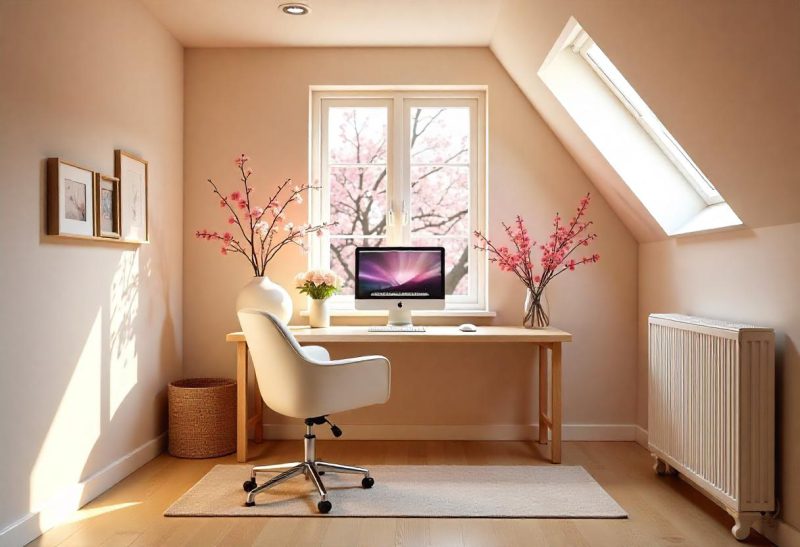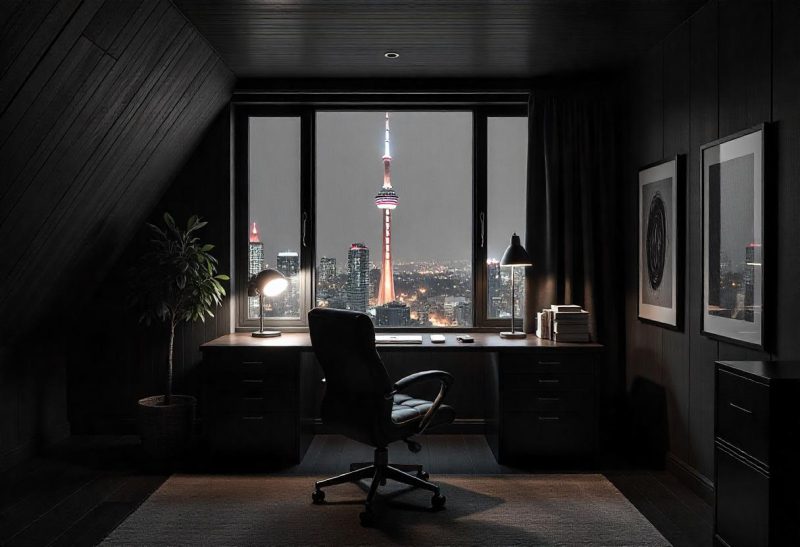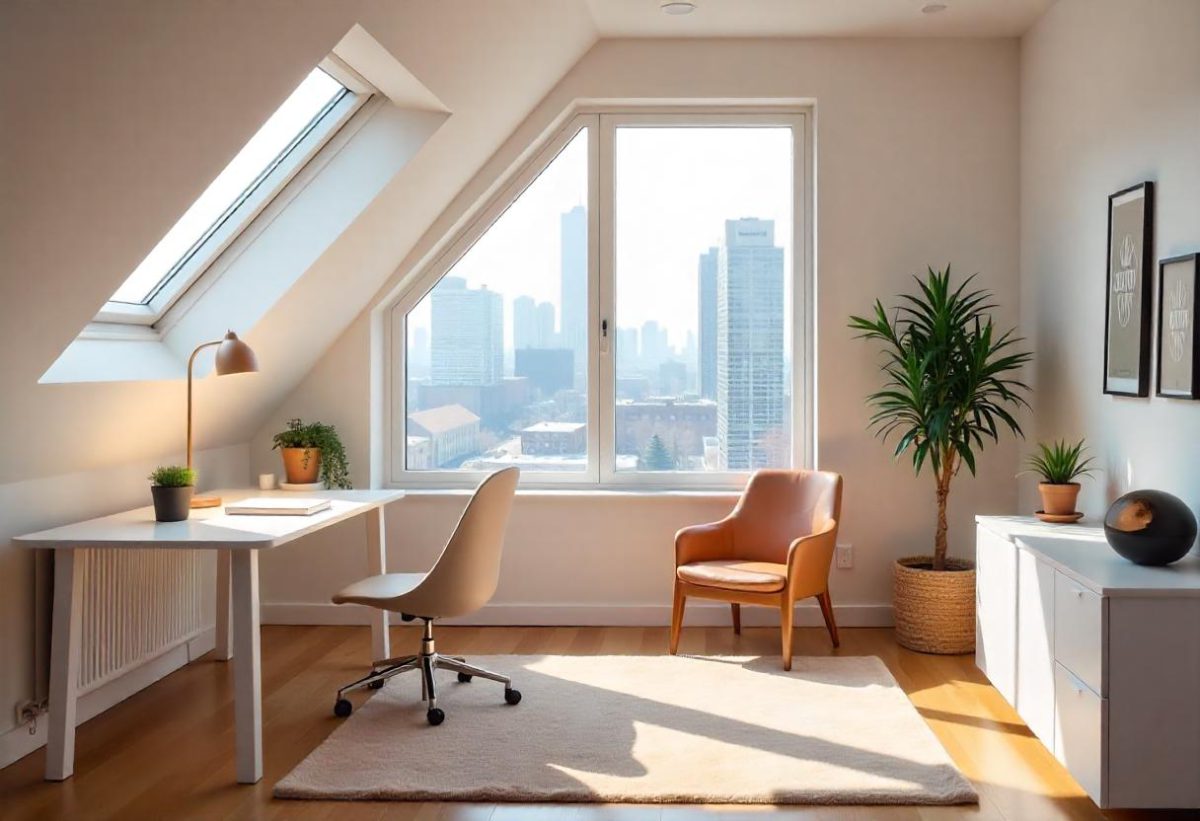In Toronto, where real estate prices continue to rise and available land is limited, making the most of your existing home is a smart investment. One of the most overlooked opportunities lies right above your head: the attic. With the right planning and professional help, your dusty, underused attic can be turned into a cozy bedroom, a productive home office, a serene studio, or even a fully equipped guest suite.
At Maple Star Builders, we specialize in custom home renovations that maximize space and add value. If you’re considering an attic conversion in Toronto, this guide will walk you through the process, from evaluation to final design.
Step 1: Is Your Attic Ready for a Conversion?
Before diving into design ideas, it’s important to evaluate if your attic is suitable for conversion.
Ceiling Height and Usable Space
Toronto’s building code requires a minimum ceiling height of 7 feet 6 inches over at least 50% of the finished floor area. If your attic is too low, you might need to consider roof alterations like dormers or even raising the roof.
Structural Support
Attic floors weren’t typically built to support regular living activities. A structural engineer can evaluate your joists and recommend reinforcements to meet safety standards.
Safe Access
A retractable ladder won’t cut it. You’ll need a full staircase that meets Ontario’s safety codes, with proper tread depth, handrails, and headroom.
Natural Light & Ventilation
Consider adding windows or skylights. Not only do they bring in daylight, but they also provide essential egress options during emergencies.
Related Service: Basement Renovations in Toronto Another great way to add livable space.
Step 2: Permits & Zoning in Toronto
Like all major home renovations in Toronto, attic conversions must follow specific bylaws and building codes.
Zoning Bylaws
You’ll need to verify height restrictions, allowable building coverage, and whether additions like dormers are permitted. These vary by neighborhood.
Building Permits
Converting your attic involves structural, electrical, and sometimes plumbing changes. A building permit ensures that your project complies with the Ontario Building Code. At MS Builders, we manage the permitting process for you, saving you time and stress.
For larger projects involving full second-story builds or rear extensions, visit our Home Additions Toronto page to learn how we help homeowners navigate zoning and design challenges.
Pro Tip: Want to go a step further? Check out our Second-Story Additions page to see how we’ve helped clients expand upward.

Step 3: Designing Your New Space
With a green light on structure and permits, it’s time for the fun part: designing your dream attic space.
Common Uses for Attic conversion in Toronto:
- Bedroom – A peaceful, tucked-away retreat
- Home Office – Home office is a Perfect place for focused, remote work
- Playroom – Great for families with young children
- Studio or Den – Think yoga, painting, or movie nights
- Guest Suite – Add value with a bathroom and sleeping space
Smart Design Tips:
- Use built-in shelves or drawers to utilize space beneath sloped ceilings.
- Add dormers or skylights to bring in natural light and enhance headroom.
- Opt for an open layout to avoid feeling cramped.
Related Page: Home Renovation Services in Toronto Where your attic project can blend into a full-house transformation.
Step 4: Insulation & Energy Efficiency
Toronto experiences both cold winters and hot summers, making proper insulation critical.
Types of Insulation:
- Spray Foam – High performance and great for sealing air leaks
- Fiberglass Batts – Budget-friendly and effective
- Blown-In Insulation – Ideal for hard-to-reach corners
Combine insulation with ventilation upgrades like ridge or soffit vents to prevent moisture buildup and maintain airflow.
Also, choose energy-efficient strategies like utilizing windows or skylights with Low-E coatings and double glazing to keep utility bills in check.
Explore More: Condo Renovations Great ideas for energy-efficient upgrades in tight spaces.

Step 5: Utilities – Power, Plumbing, and Climate Control
To turn your attic into a livable space, you’ll likely need upgrades to:
Electrical
Work with a licensed electrician to add outlets, light fixtures, and wiring for modern needs like charging stations or entertainment setups.
Plumbing (Optional)
If your design includes a bathroom or wet bar, plumbing lines must be routed from existing systems. This requires careful planning and execution by a certified plumber.
HVAC
Attics can get hot and stuffy. Solutions like ductless mini-split systems or radiant floor heating can efficiently regulate temperature.
Step 6: Interior Design and Finishing Touches
Once construction is complete, it’s time to make the space feel like home.
Flooring
- Carpet – Cozy for bedrooms and playrooms
- Engineered Hardwood – Stylish and sturdy
- Vinyl or Laminate – Great for moisture-prone areas like bathrooms
Color & Decor
Use light colors to open up the space. Choose minimalist, space-saving furniture to avoid clutter, and personalize the room with art, textiles, and lighting.
Ready to Attic Conversion in Toronto?
An attic conversion isn’t just a renovation, it’s an opportunity to reimagine how you live. At Maple Star Builders, we guide Toronto homeowners through every step, from evaluation and permits to final design and construction.
Whether you want to convert your attic, upgrade your kitchen, or finish your basement, our experienced team ensures your project runs smoothly, on time, and on budget.
Let’s bring your attic to life.
Visit our Contact Us page to schedule a free consultation today.
References:
-
- Ontario Building Code – Attic Access Requirements.
https://www.buildingcode.online/467.html - Recommended Attic Insulation Levels in Ontario.
How Much Attic Insulation is Recommended in Ontario for Optimal Energy Efficiency
- City of Toronto Zoning By-law.
City of Toronto- zoning by- law.
- Ontario Building Code – Attic Access Requirements.


